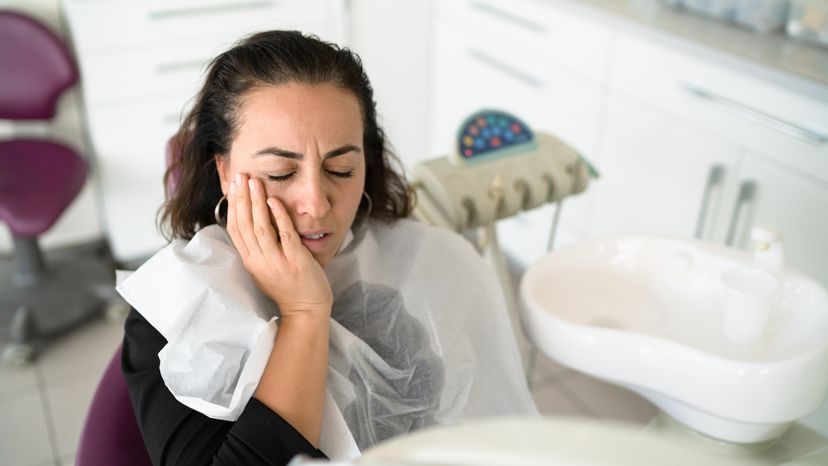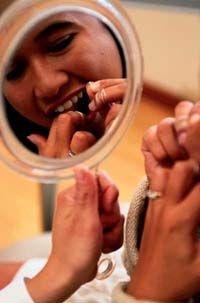
You're brushing your teeth, and when you rinse and spit, you see a little blood. No big deal, you think to yourself. It happens all the time. Well, it's time to think again, because that bit of blood may be a much bigger deal than you think. It may be a sign of gingivitis, the first stage of gum disease. According to the American Dental Association, gum disease -- not dental caries, or "cavities" -- is the leading cause of tooth loss among adults. In this article, we'll help you understand how to prevent gingivitis and, if you already have gum disease, what to do about it. But first, let's get to know the problem a little better.
Gingivitis is inflammation, swelling, and bleeding of the gum tissue caused by the bacteria that naturally coat the teeth. The bacteria form a sticky, whitish film on the teeth called plaque. If plaque isn't thoroughly removed every day, the bacteria produce toxins that irritate the gums, making them red, swollen, and likely to bleed easily. Eventually, the toxins destroy gum tissue, causing it to separate from the tooth and form pockets. The pockets hold more bacteria and detach even further. This is periodontitis, an irreversible stage of gum disease that can destroy the bone and soft tissue that support the teeth.
Advertisement
If you have gingivitis, you're not alone. According to the American Dental Association and the American Academy of Periodontology, three out of four adults have gingivitis. Most gingivitis results from poor oral hygiene--not brushing and flossing correctly or often enough and not having teeth professionally cleaned on a regular basis. However, a number of factors can increase your risk. Dentists say that people who are chronically stressed seem to develop gum problems more often than laid-back types. Hormones influence risk, too, which is why the condition often flares up in women who are pregnant or menstruating. Likewise, adolescents, whose hormones are going crazy, sometimes develop gingivitis. Some diseases, such as diabetes, and some drugs, including phenytoin (an anticonvulsant), are associated with gingivitis. Finally, if you tend to breathe through your mouth rather than your nose, you may be setting yourself up for this unpleasant condition, since moving air in and out of your mouth causes the gums to dry and could result in an overgrowth of gum tissue.
If you have gingivitis, don't break out those false teeth just yet. Read on to the next to the next section for some tips on how to combat gum disease.
This information is solely for informational purposes. IT IS NOT INTENDED TO PROVIDE MEDICAL ADVICE. Neither the Editors of Consumer Guide (R), Publications International, Ltd., the author nor publisher take responsibility for any possible consequences from any treatment, procedure, exercise, dietary modification, action or application of medication which results from reading or following the information contained in this information. The publication of this information does not constitute the practice of medicine, and this information does not replace the advice of your physician or other health care provider. Before undertaking any course of treatment, the reader must seek the advice of their physician or other health care provider.
Advertisement
